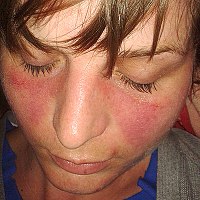
Photo from wikipedia
Early diagnosis represents the target of contemporary medicine and has an important role in the prognosis and further treatment. Saliva is a biofluid that generated a high interest among researchers… Click to show full abstract
Early diagnosis represents the target of contemporary medicine and has an important role in the prognosis and further treatment. Saliva is a biofluid that generated a high interest among researchers due to its multiple advantages over other body fluids. The multitude of components that can act as biomarkers influenced the existing technologies to develop protocols that could allow saliva to become the new noninvasive diagnostic method. Saliva as a diagnostic tool can bring substantial addition to the diagnostic armamentarium, providing important information about oral and general health. The diagnostic applications of saliva extended and had a rapid evolution due to the advancement in salivaomics. The present review summarizes the latest researches in saliva-related studies and explores the information and correlations that saliva can offer regarding the systemic and oral diseases, highlighting its great potential of diagnosis. It is expected that in the future specific guidelines and results regarding the salivary diagnostics are to be available, together with high-sensitivity and specificity tests for multiple systemic and oral diseases.
Journal Title: Disease Markers
Year Published: 2019
Link to full text (if available)
Share on Social Media: Sign Up to like & get
recommendations!